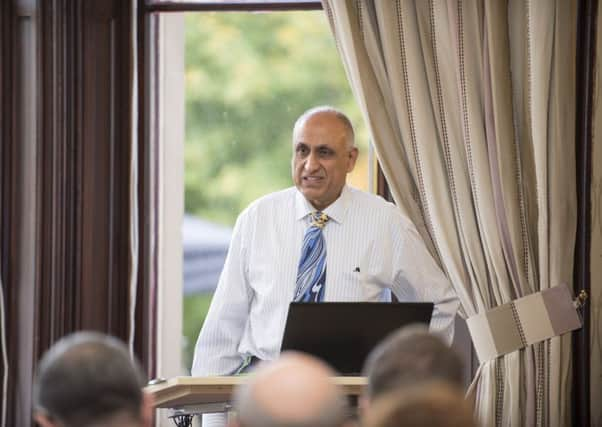Tariq Muneer: Renewable energy and better batteries will power the rollout of electric cars


There were a large number of significant competitors – computer, phones, and internet; however, the word that won the competition was ‘automobile’.
Indeed, the automobile is one of the greatest inventions of modern times. While the internet enables the swift transfer of data over large distances, the automobile transports people with speed, comfort, safety, and economy.
Advertisement
Hide AdAdvertisement
Hide AdCurrently, there are more than 1.2 billion vehicles on this planet. That figure is expected to rise to two billion by 2035. The runaway success of the automobile is due to its impressive performance – it travels more than 300 miles without refuelling the fuel tank and can attain speeds of more than 100 mph.
Automobiles are a liberating technology for people all over the world, allowing people to live, work, and play in ways that were unimaginable a century ago. Automobiles provide access to markets, to doctors, and to jobs. Nearly every car trip ends with either an economic transaction or some other benefit to our quality of life.
The kerbside and global pollution generated by combustion engine (CE) vehicles though will eventually be its undoing and the case for electric vehicles is gaining momentum.
However, e-vehicles charged by fossil-fuel electricity actually liberate more carbon in the atmosphere. The only solution therefore is to use electricity from renewable means.
To quote some figures, for each mile a medium-sized vehicle such as a Renault Megane travels, 208 grams of carbon dioxide are emitted. In contrast a similar-sized electric vehicle respectively powered by solar or wind will only produce 13 or four grams!
Since the latter figures are based on life-cycle assessment of the two respective technologies, they will, in time, drop sharply by using feedback loop, with renewable energy being used to produce renewable power plants.
UK motorists typically drive 20 miles a day and present electric vehicles may be driven 3.4 miles for each kWh that is available from the battery.
Sceptics usually raise two issues related to renewable energy power – its present small contribution to grid capacity, and its intermittency, but I would argue that these issues will become less of an obstacle.
Advertisement
Hide AdAdvertisement
Hide AdThe UK electricity grid is nearly a century old having been created by the Electricity (Supply) Act of 1926. In comparison, wind and solar power only got a foothold in any meaningful manner within the past decade or so.
Yet, compared to the present 62GW peak power demand, the peak capacities for solar and wind are 12 and 14GW. Of course, due to their intermittent nature only a fraction of the rated energy capacities for the latter renewable sources are delivered to the National Grid. The term used is load factor, which is 11 per cent for solar and 29 per cent for the United Kingdom. The actual energy delivered by the present solar and wind-powered plants is enough to support nearly two million electric vehicles.
The UK is not the leader either in respect of the number of on-road electric vehicles, nor the solar and wind power capacities – Norway leads the world on the first metric with a quarter of the automobile population being electricity-driven, while Germany leads the European pack with 41GW of solar and 45GW of wind power.
There is no shortage of space for deployment of solar power. Recently, China joined France and Holland in launching its first solar-powered expressway. In Jinan, cars now travel over a section of the motorway which generates solar electricity. The photovoltaic panels are protected by load bearing, transparent concrete.
Take the hypothetical case of converting the M6 and M8 to solar-powered motorways. While the M8 is 97km long, the M6 is 374km. The energy that could be generated from these motorways would be enough to power more than 100,000 cars.
The intermittency problem of renewables is currently being addressed by the UK Battery Storage Project. An example is E.ON’s recently completed Blackburn Meadows UK grid-scale energy storage. The UK has now reached 100MW capacity of large-scale battery storage which is made up of 50 individual projects, each of which is larger than 250kW.
Sixty per cent of the above capacity was added in the past year. A further 390MW of storage projects are in the pipeline, taking the cumulative total to nearly 500MW. With the cost of batteries dropping, the intermittency problems of renewables will thus be addressed.
Tariq Muneer is the lead editor of Electric Vehicles: Prospects and Challenges’, Elsevier, 2017.